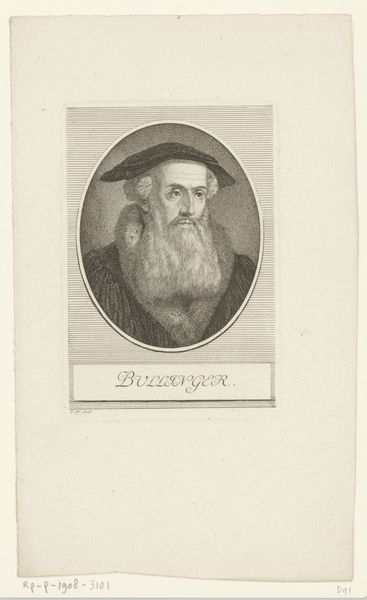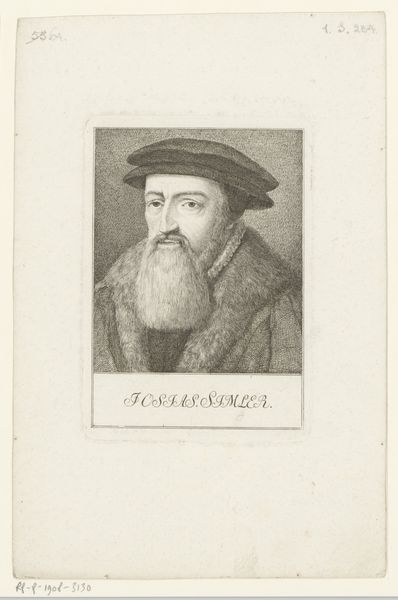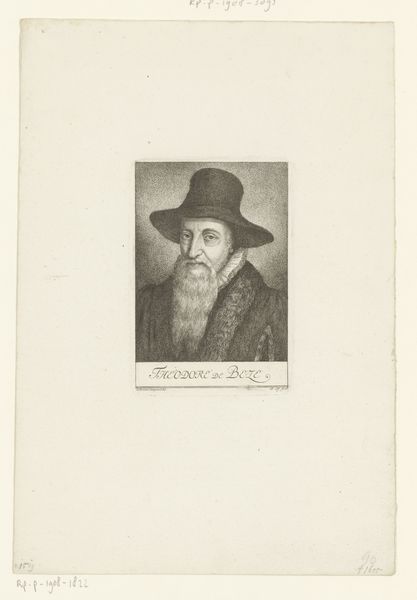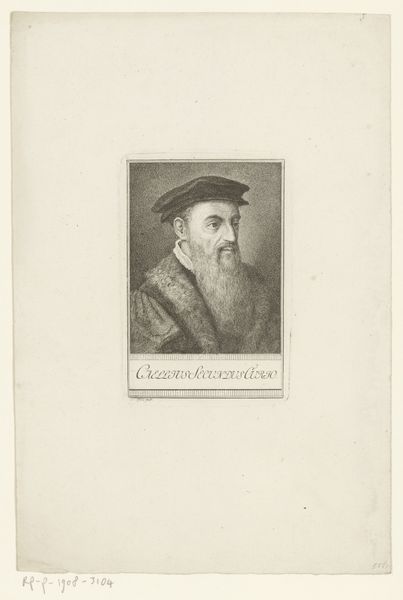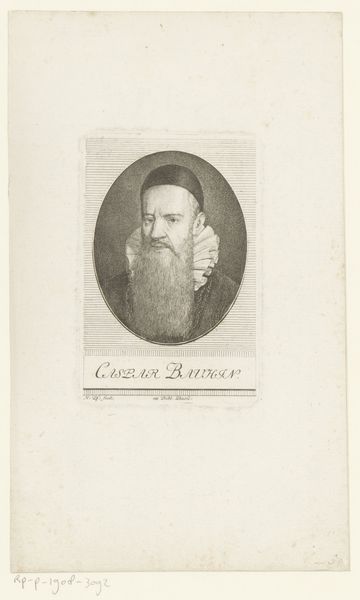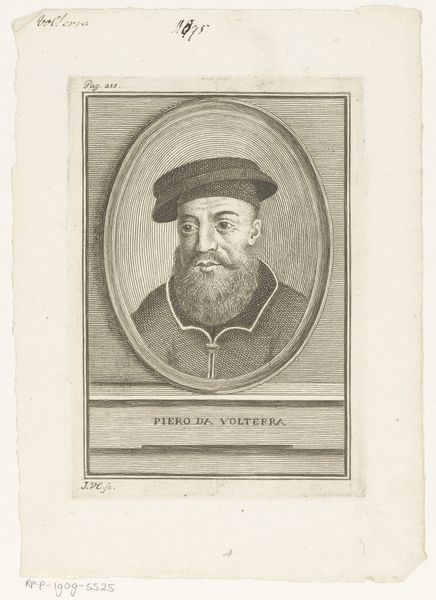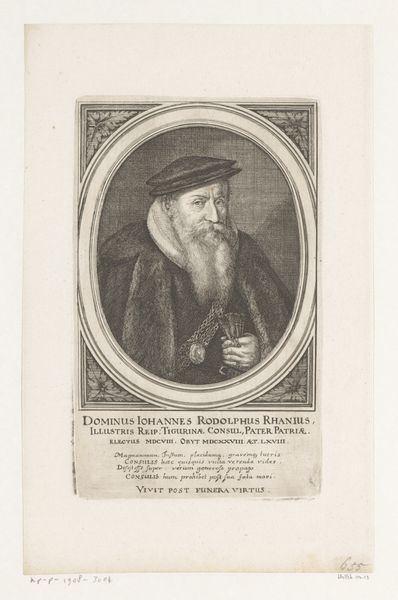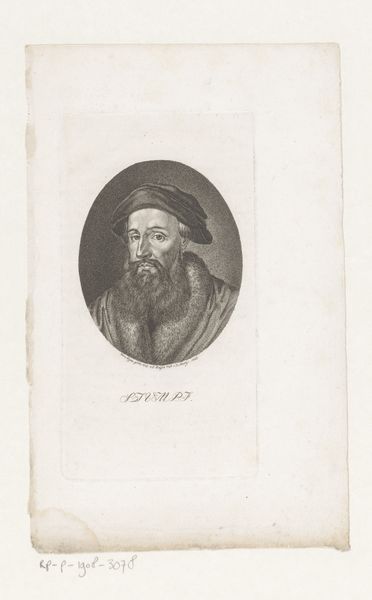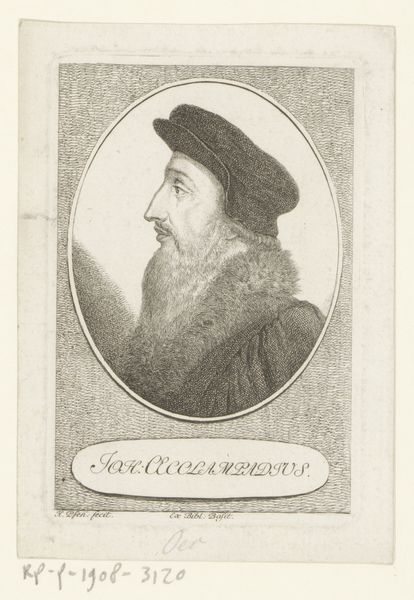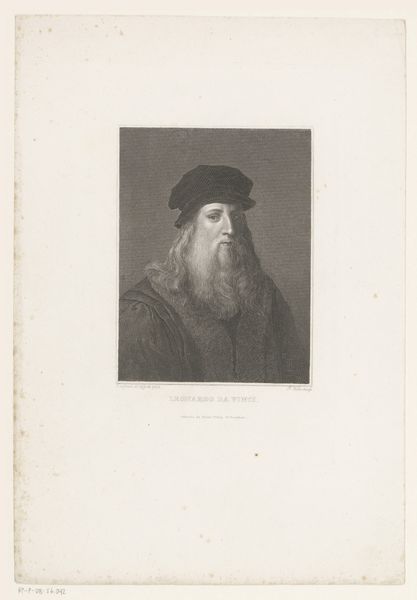
Dimensions: height 126 mm, width 88 mm
Copyright: Rijks Museum: Open Domain
Editor: Here we have a portrait of David Jorisz, an engraving dating sometime between 1759 and 1815 by Heinrich Pfenninger. It’s rendered in that fine, almost feathery line, which I find very striking. What do you make of this work, and what should we be thinking about when looking at it? Curator: The political implications of portraiture are fascinating, especially concerning religious figures like David Joris. This print, made well after Joris’s death, participates in the historical narrative surrounding him. We need to consider how Joris was seen then versus how the artist or commissioner wished to portray him later. Note the use of the circular frame - is it trying to convey an emblem of a certain sect of belief? Editor: That’s a very good point! I was initially just focusing on the face, the kind of intense gaze he has, but placing it within its historical reception makes me think very differently about the image. Is it trying to create a heroic or even a cautionary depiction? Curator: Exactly! And let’s think about Pfenninger. What political and religious atmosphere was he working within when making this engraving? Prints like these often served specific ideological purposes within particular social circles. Who was his audience, and what image of Joris did they expect or want to see? Did they admire Joris? Editor: It’s almost like we need to look at it in layers – Joris himself, then the historical context he existed in, and finally, how this print of him functions politically so much later! It’s far more layered than I originally thought. Curator: Precisely. Art objects, especially portraits, aren't neutral. They carry the weight of history and the agendas of those who create and circulate them. Thinking about the institutional context—who commissioned this print, where was it sold, who collected it—tells us even more. Editor: This has definitely changed my approach to interpreting portraits. It’s not just about the individual depicted, but all of this historical and cultural information around them! Curator: Indeed. We both dove deeper into the politics embedded within the visual representation itself!
Comments
No comments
Be the first to comment and join the conversation on the ultimate creative platform.
